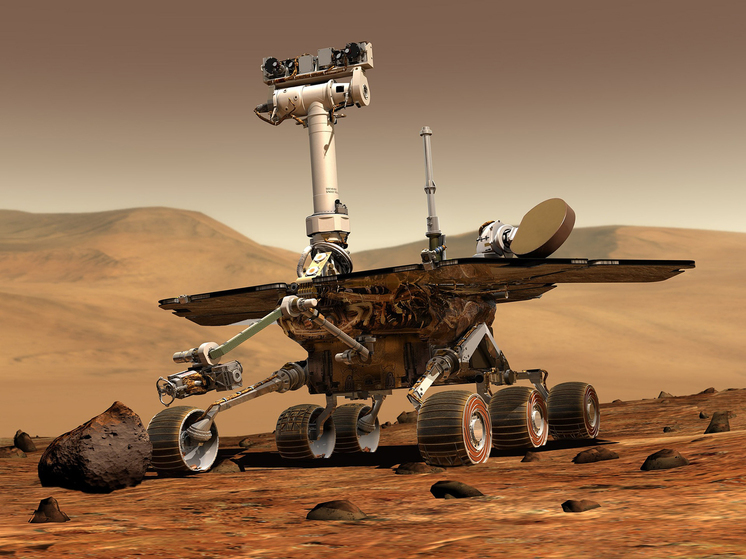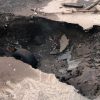The cost of the ambitious mission was estimated at $11 billion
NASA's search for signs of life on Mars has divided experts as the mission turned out to be more expensive than expected. Critics say the rising cost of the plan to bring rock samples to Earth threatens other space projects.

This is one of the most complex space missions ever conceived, writes The Observer. A fleet of unmanned probes and robotic rovers will be sent to Mars to collect rock samples, which will then be sent back to Earth to be examined for signs of life. This mission – sample return from Mars, and will include the first-ever space launch from another planet, as well as the first-ever rendezvous in orbit around another planet.
But this hugely ambitious NASA mission is in jeopardy. Its costs have skyrocketed, and an independent review panel set up by the space agency has just warned that the mission's original cost of $4.4 billion is likely to soar to between $8 billion and $11 billion. As a result, a number of other NASA missions may be cancelled.
“The return of samples from Mars was managed with unrealistic budgetary expectations,” the panel said in its report. – There is currently no credible, agreed-upon technical plan, nor adequately specified timelines, costs and technical baselines that could be achieved with likely available funding.” In fact, there is “nearly zero probability” that NASA's plan will succeed within its current budget, the board concluded.
To the ire of some space scientists, the rising costs of the mission have already played a role in delaying other NASA-funded projects. These include a Veritas mission to study Venus to find out why this incredibly hot planet has lost its potential as a habitable world.
Another casualty was the Geospace Dynamics Constellation mission to study the upper atmosphere. «You're cutting an artery, the lifeblood of our science,» plasma physicist Allison Jaynes of the University of Iowa told Science. — All of NASA's science is suffering due to the burden of delivering samples from Mars”.
The mission will rely on the robotic rover Perseverance, which is currently cruising the Red Planet collecting samples of Martian rock. They are placed in titanium tubes, each the size of a hot dog, and stored. In a few years, the agency plans to send a lander to Mars, which is currently being developed by Lockheed Martin.
"Perseverance" would place its stock of containers in this lander, which would then be sent back into space and placed in orbit around Mars, while the third vehicle – Earth return orbiter, built by the European Space Agency (ESA), – would pick up the stone pipes and deliver them back to Earth. The small probe will parachute samples back to waiting scientists, perhaps by 2033 at the earliest, NASA said.
Unfortunately, The Observer notes, the US space agency initially underestimated the size of the spacecraft that would be needed to take samples from the surface of Mars. It also failed to implement the extremely complex steps that would need to be taken to prevent contamination of Martian soil samples by terrestrial bacteria or viruses, as well as to protect against possible contamination of Earth by Martian life forms.
It is also reported that inflation and supply shortages have driven up costs.
As a result, several leading scientists have called for the mission to be abandoned, although many others say it should be retained.
The last group points to the example of the James Webb Space Telescope, which barely survived a series of failures after its price soared from $1 billion to $10 billion, leading to the postponement of other space missions. But now the telescope is returning breathtaking images of distant stars and galaxies and transforming our knowledge of deep space.
According to Professor Lewis Dartnell of the University of Westminster, returning a sample from Mars has similar transformative potential. “Currently, we must look for evidence of past life on Mars, trying to shrink an entire laboratory down to miniature size so that it can be equipped with wheels and cameras to move around Mars in the hope that it can detect signs of life. Returning samples from Mars will change all that, making Martian rock accessible to the most advanced analytical laboratories on Earth. This will give us the best chance of finding evidence that there was once life on Mars.
This view was supported by Professor Caroline Smith of the Natural History Museum in London. “We're not going to open up one of these specimens and find a dinosaur bone. We are only going to find signs of past primitive life by subjecting them to a variety of physical and chemical tests, which in many cases can only be carried out with huge building-sized instruments such as the British Diamond Light Source. Only when we have carried out all these tests will we be able to say that there is clear evidence that the sample contains the remains of once living beings.
Scientists now believe that 4 billion years ago, Mars was a warm, watery world with ideal conditions for the emergence of life. However, the planet later lost its magnetic field, as well as its water and atmosphere, and was exposed to intense ultraviolet radiation. Life would be difficult to survive.
“Nevertheless it is important to find out whether living things evolved there in the past, just as it is important to find out whether they now exist anywhere else in the solar system , said Professor Andrew Coates from University College London. – We now know that Europa, a moon of Jupiter, and Enceladus, a moon of Saturn, have seas of water rich in organic matter. Life may have evolved there, and we also need to explore these worlds, because if we find that life is present on these distant moons and once existed on Mars in the past, we will have very strong evidence that life is widespread throughout Universe”.























































Свежие комментарии